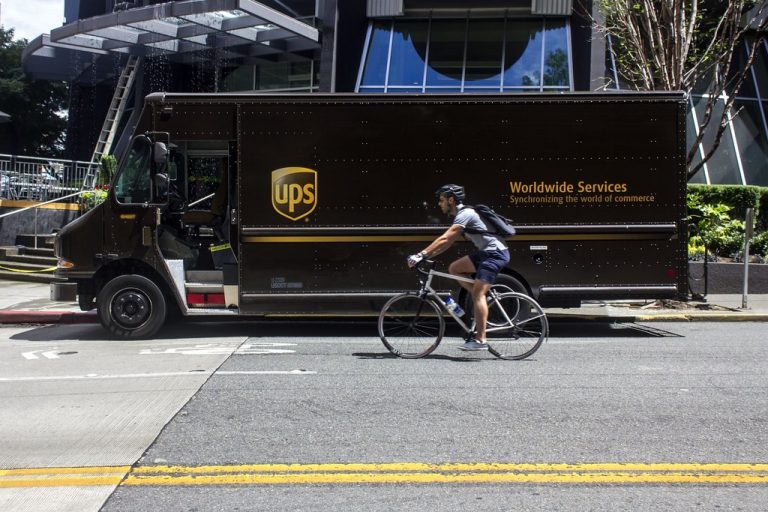Published on February 27, 2021

Congested city streets. Trucks fighting for curb space. Bottlenecks on beltways and bridge approaches as freight-laden semis rumble toward crowded urban centers. Pedestrians, cyclists, commuters, rideshare vehicles, and parcel-crammed vans—all contending with one another.
This was the picture in many cities before the pandemic hit, fueled in part by the on-demand economy. An October 2019 New York Times report carried a blunt headline—“The Internet Brings Chaos to N.Y. Streets”—and cited revealing metrics, including 1.5 million packages delivered daily in the city that year and $27 million in parking fines paid by Fedex, FreshDirect, Peapod, and UPS to cover 515,000 summonses issued in 2018.
With online-ordering habits only reinforced during the health crisis and vehicle traffic set to rise across America as 2021 advances, urban congestion is certain to stage a comeback.
But Dr. Anne Goodchild, founding director of the Supply Chain Transportation & Logistics Center at the University of Washington in Seattle, points out that there are ways for cities to rebound smartly, rather than simply returning to chaotic streets when vehicles and people crowd together again.
A leader in the Center’s Urban Freight Lab—a working group of researchers, urban planners, and industry representatives—Goodchild, who earned a doctorate from Berkeley in civil and environmental engineering, helped pioneer the study of truck traffic and city congestion.
A specialist in urban delivery networks, mobility hubs, supply-chain management, land use, and the environmental impacts of commercial transport, she talks to us about delivery innovation, freight optimization, forward-looking companies, and exciting developments to watch.
Q. Can you highlight some of Urban Freight Lab’s work in support of cities?
One of the things we offer is the Final 50 Feet Toolkit. Built from tools developed for our own research and packaged for easy use by others, these instruments—including data collection methods and metrics for evaluating urban freight performance—help cities understand and solve local urban freight challenges. In addition, all our research projects result in publicly available reports on our website. We’ve written about the sustainability of grocery delivery, how much time trucks spend looking for parking, and the performance of cargo bikes, to name a few.
Another element is our proximity to both the public and private sectors, which allows us to see boundary-breaking solutions. And our technical expertise gives us tools to figure out how they can work. We were the first to recognize and explore the Final 50 Feet problem in the urban goods delivery system, as well as to quantify commercial vehicle parking cruising and to test common-carrier lockers on public spaces in North America.
Finally, I’d mention the fact that we’re committed to implementing practical tests and trials of new solutions—an essential component of research in applied engineering. Right now, we’re testing a shared mobility hub, sensors to monitor commercial parking areas, a mobile app to provide drivers with real-time parking availability in commercial spaces, and those lockers on both public and private property.
Continue reading at Blueprint Future.
Originally written by Phil Hanrahan for Blueprint Future.